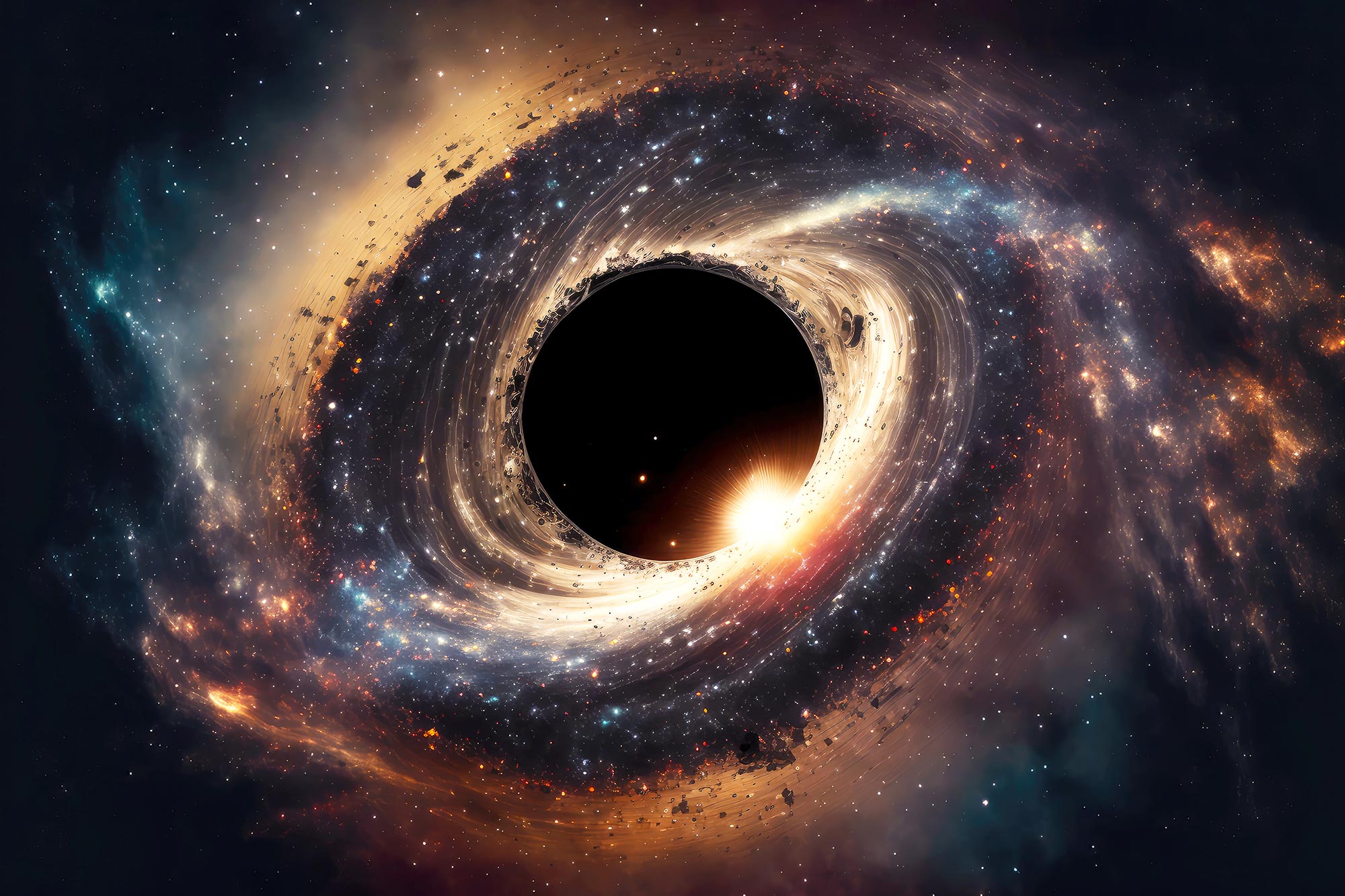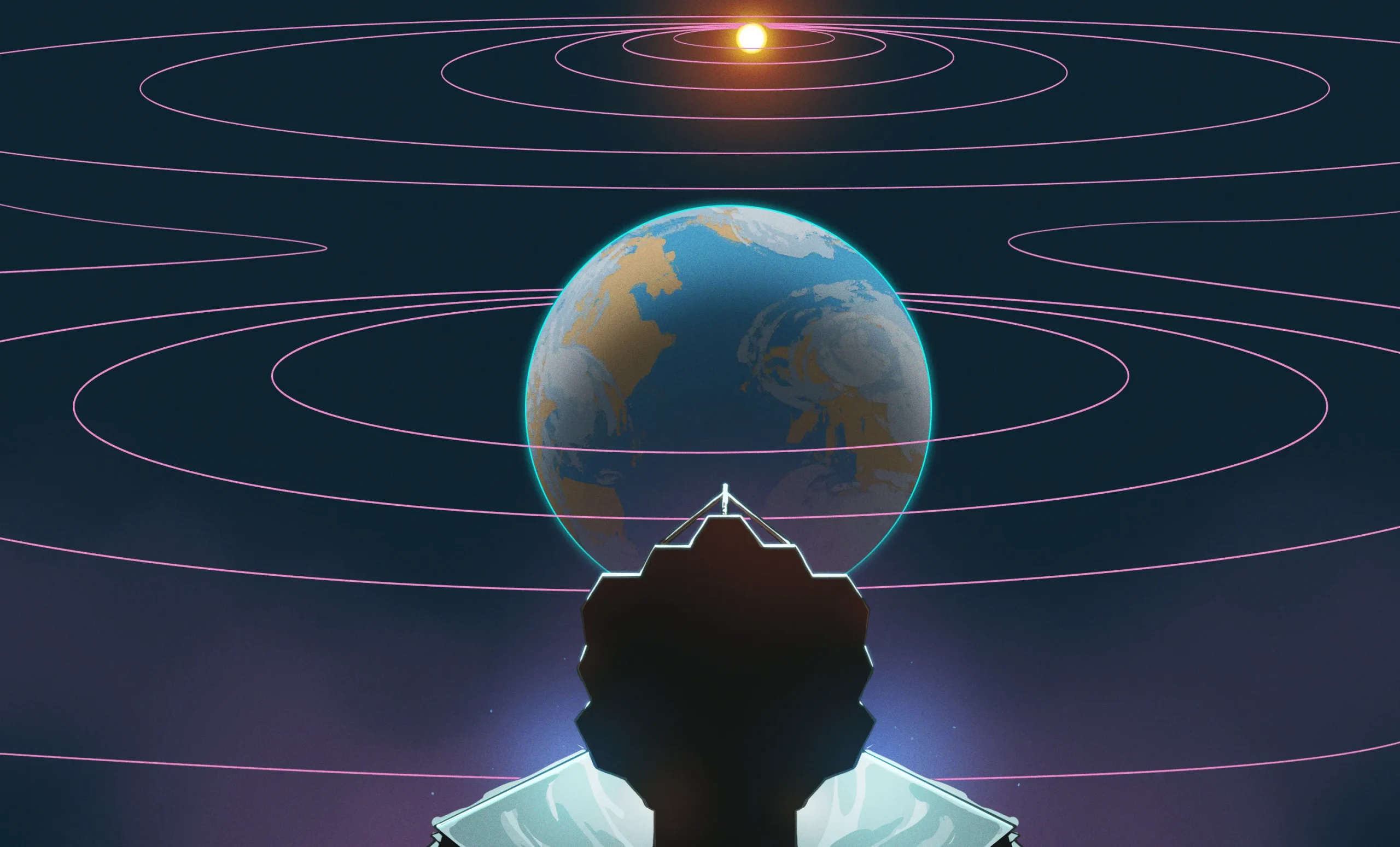zoomacademia.com – Black holes are among the most fascinating and mysterious objects in the universe. They are regions of space where the gravitational pull is so intense that nothing, not even light, can escape from them. First predicted by Albert Einstein’s theory of general relativity in 1915 and confirmed by astronomical observations, black holes remain a subject of great intrigue for scientists and the public alike.
What is a Black Hole?
A black hole forms when a massive star collapses under its own gravity after exhausting its nuclear fuel. When this happens, the star’s core compresses into an incredibly dense point, called a singularity. Surrounding this singularity is the event horizon, the boundary beyond which nothing can escape the black hole’s gravitational pull. Once something crosses this threshold, it is lost to the universe forever.
Black holes are typically classified into three types:
- Stellar Black Holes: Formed from the remnants of a massive star, these black holes are relatively small but incredibly dense. Their masses range from 3 to 10 times that of the Sun.
- Supermassive Black Holes: These titanic black holes, with masses millions to billions of times greater than the Sun, are found at the centers of most galaxies, including our own Milky Way.
- Intermediate Black Holes: A mysterious class, these black holes fall between stellar and supermassive black holes in terms of size and mass, though their formation process remains unclear.
The Event Horizon: A Point of No Return
The defining feature of a black hole is its event horizon. Once an object, whether it’s a star, planet, or particle, crosses this boundary, it is pulled inexorably towards the singularity, the core of the black hole where all the mass is concentrated. The closer an object gets to the event horizon, the stronger the gravitational pull becomes, a phenomenon known as spaghettification, where objects are stretched and compressed.
The event horizon is also the point at which space and time become so warped that the laws of physics as we understand them begin to break down. Time effectively slows down the closer one gets to the event horizon, an effect predicted by Einstein’s general relativity and observed in extreme astrophysical conditions.
Hawking Radiation: A Window into Black Hole Evaporation
One of the most groundbreaking insights into black holes came from physicist Stephen Hawking, who theorized in 1974 that black holes are not entirely black. According to quantum mechanics, black holes can emit a faint radiation, now known as Hawking radiation. Over immense timescales, this radiation can cause black holes to lose mass and eventually evaporate completely.
Hawking’s discovery bridged the gap between quantum mechanics and general relativity, providing a potential avenue for unlocking deeper truths about the universe. However, the exact nature of this radiation remains a subject of ongoing research, as it challenges our understanding of how information behaves in extreme environments.
Supermassive Black Holes and Galactic Formation
Supermassive black holes, which sit at the heart of most galaxies, including the Milky Way, are critical to understanding how galaxies form and evolve. These behemoths exert tremendous gravitational influence, often fueling quasars, some of the brightest objects in the universe. Quasars are powered by material falling into supermassive black holes at incredibly high speeds, emitting immense amounts of energy in the process.
The role of supermassive black holes in galactic formation is still a topic of investigation. Some theories suggest that black holes and galaxies evolve together, with the growth of one influencing the other. Observations of black holes across the universe may eventually help answer these questions, shedding light on the origins of galaxies and the universe itself.
Gravitational Waves: New Insights from Colliding Black Holes
The detection of gravitational waves in 2015 by the LIGO (Laser Interferometer Gravitational-Wave Observatory) marked a significant breakthrough in astrophysics. These ripples in spacetime, caused by the collision and merger of black holes, provide new ways of studying black holes and the cosmos.
Gravitational waves carry information about the black holes that produce them, including their masses and spins, and allow scientists to observe cosmic events that were previously invisible. This discovery has opened a new window into the universe, enabling researchers to explore the most violent and extreme phenomena in the cosmos.
The Future of Black Hole Research
Despite the advances made in recent years, black holes continue to pose many unanswered questions. How do supermassive black holes form? What happens inside the event horizon? Can black holes be used to study the nature of quantum gravity?
Future missions, such as the Event Horizon Telescope (EHT), which captured the first-ever image of a black hole in 2019, and the ongoing research into gravitational waves, will likely bring us closer to answers. These efforts represent humanity’s continuing quest to understand the universe and the fundamental forces that shape it.
Conclusion
Black holes represent the ultimate frontier of our knowledge of physics and astronomy. They are both mysterious and awe-inspiring, offering glimpses into the extreme conditions of the universe. As research progresses, black holes may unlock profound insights into the nature of reality itself, helping us explore the deepest questions about time, space, and existence.







